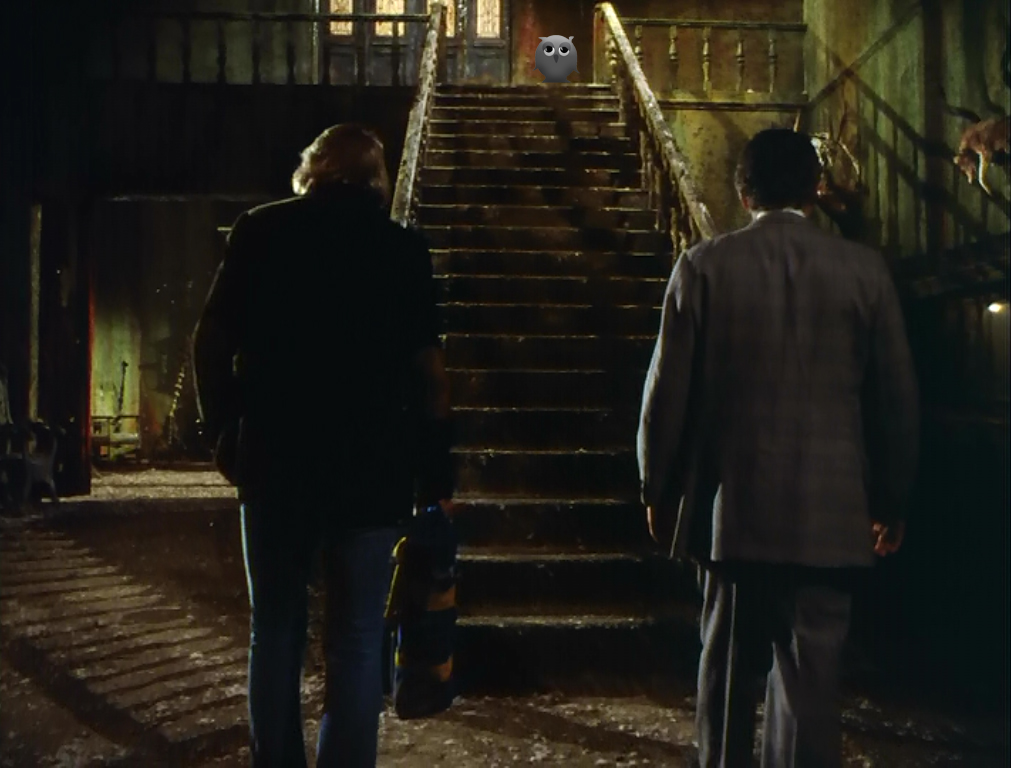Salem’s Lot (1979)
Wise Rating 78%
Review Date: 2018

Concept: Vampires in small town Maine, based on the novel by horror writer Stephen King
- A mega-vampire looking exactly like Nosferatu (the main character from the 1922 silent classic of the same name) invades a small town along with his caretaker.
- “Salem’s Lot” was first broadcast on network TV back in 1979. When I was in high school at the time, I said to my best friend, “Hey, did you see ‘Salem’s Lot’ last night?” And he said, “Yeah, it was so cool!” It’s the only conversation about a TV program or movie that I can remember from high school days. Certain super-creepy scenes from “Salem’s Lot” stamped themselves on my memory and have remained with me all my life.
- I hadn’t seen the mini-series since 1979. Can the two-part mini-series hold up today? After seeing the first part now, I thought that my memories might have misguided me. But once the second part was over, I thought, yep, this is the creepfest I remember it to be, one of the best horror works that network TV has produced.
- The mini-series was originally broadcast in two 1 ½ hour segments, but it’s one continuous 3-hour film on the Blu-Ray. Sometimes, combining a two-parter into one works well, but other times, like here, it’s best to see the movie in the original two parts because that’s the way it was designed and intended. Seeing both parts of “Salem’s Lot” together would probably be too tiring and diminish the overall impact. So my suggestion is when you see Straker put up an “Opening Soon” sign on his antique shop, end your viewing for that day because that’s when the first part finished originally.
- The first part is really a mystery story that spends most of its 90 minutes getting to know the people in this small town, as well as the protagonist, author Ben Mears, who has returned to his birthplace to write a book about the ominous Marsten House.
- Initially, the first part seems to spend too much time on the trivial details of the mostly small-minded townfolk. But when combined with the second part, which is more of the horror movie, the mini-series comes together quite well and it makes sense that we got to know all these people (although we could have done without the adulterous couple storyline).
- As I’ve mentioned in my other horror movie reviews, the fun in a horror flick is not in trying to figure out what’s going to happen next, but in knowing what’s going to happen next and dreading it. With “Salem’s Lot,” you know when things are going to go south, and the filmmakers know that you know. This film was done with a lot of horror panache, which makes sense, being that director Tobe Hooper later went on to co-direct the classic horror film “Poltergeist” (1982).
- Remember too that the mini-series was the most prestigious TV format of the time, and much more budget and thought went into the making of a mini-series than for your typical TV program. There’s barely anything that can be considered good from standard 1970s TV programming, but the mini-series always stood out.
- David Soul, star of the then-famous but now forgotten cop-buddy action program “Starsky and Hutch,” really shows his acting chops and commands the screen in “Salem’s Lot,” making a convincing portrait of a tormented man.
- The other actors do a pretty good job as well, in no small measure because of the presence of legendary actor James Mason as the antagonist antique dealer Straker. When a famous master actor participates in a film, it often seems to up the game for all the other actors.
- If you’re a horror fan, you should definitely watch “Salem’s Lot,” which is now a classic of its own. Just have some patience with the first part and divide the movie into the two viewings that were intended.
- Musophobia Alert: The interior of the Marston House has some rodents rearing their ugly heads. Once in the house, don’t look when he opens the drawer if you suffer from fear of rats!
- “Salem’s Lot” was remade into another mini-series in 2004; the 2004 version is not worth watching.
Not For Kids

David Soul and Ed Flanders in “Salem’s Lot” (1979)